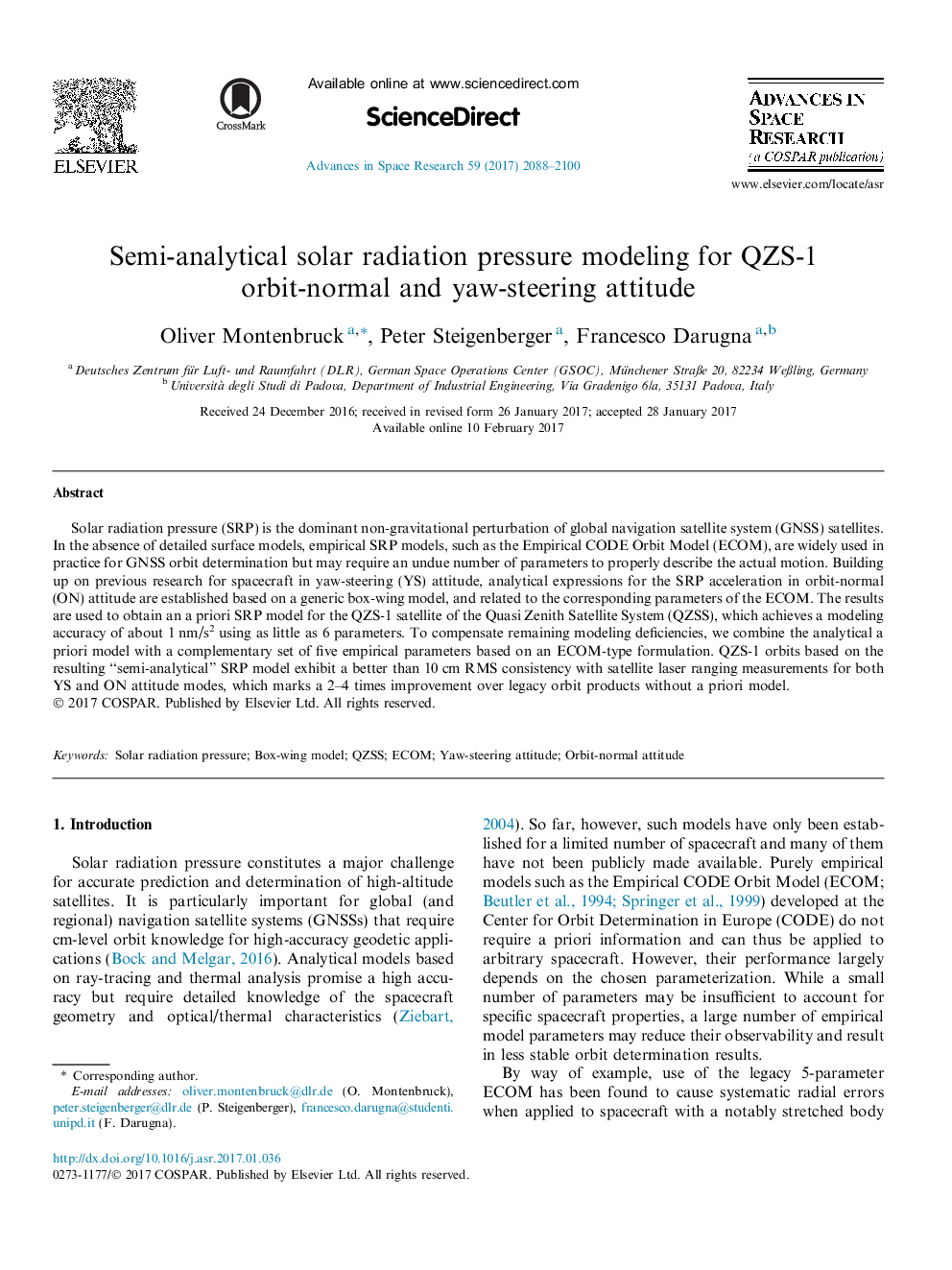| Article ID | Journal | Published Year | Pages | File Type |
|---|---|---|---|---|
| 5486678 | Advances in Space Research | 2017 | 13 Pages |
Abstract
Solar radiation pressure (SRP) is the dominant non-gravitational perturbation of global navigation satellite system (GNSS) satellites. In the absence of detailed surface models, empirical SRP models, such as the Empirical CODE Orbit Model (ECOM), are widely used in practice for GNSS orbit determination but may require an undue number of parameters to properly describe the actual motion. Building up on previous research for spacecraft in yaw-steering (YS) attitude, analytical expressions for the SRP acceleration in orbit-normal (ON) attitude are established based on a generic box-wing model, and related to the corresponding parameters of the ECOM. The results are used to obtain an a priori SRP model for the QZS-1 satellite of the Quasi Zenith Satellite System (QZSS), which achieves a modeling accuracy of about 1Â nm/s2 using as little as 6 parameters. To compensate remaining modeling deficiencies, we combine the analytical a priori model with a complementary set of five empirical parameters based on an ECOM-type formulation. QZS-1 orbits based on the resulting “semi-analytical” SRP model exhibit a better than 10Â cm RMS consistency with satellite laser ranging measurements for both YS and ON attitude modes, which marks a 2-4 times improvement over legacy orbit products without a priori model.
Keywords
Related Topics
Physical Sciences and Engineering
Earth and Planetary Sciences
Space and Planetary Science
Authors
Oliver Montenbruck, Peter Steigenberger, Francesco Darugna,
